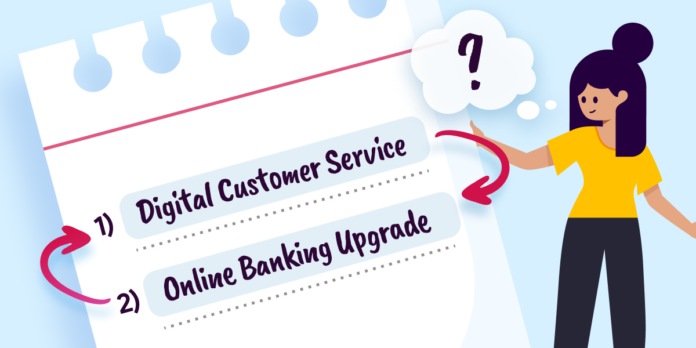Prioritizing Customer Experience for Smoother Technology Transitions
A rapidly growing number of financial institutions are truly understanding the transformative benefits of implementing Digital Customer Service (DCS) on their digital properties. Once that lightbulb goes on, the wheels start turning on the many ways to elevate the customer journey by incorporating DCS into the roadmap. With the right vendor (wink wink) serving as a trusted advisor, the path to get started can be surprisingly clear-cut.
However, it is not uncommon for banks and credit unions to have other significant planned technology initiatives like a new or upgraded Online Banking Platform (OLB) or a core conversion competing for a spot at the starting line. Of course, those are pretty major foundational projects of great importance, so the inclination might be to prioritize DCS until AFTER such upgrades or conversions. But is that a wise decision?
At its heart, Digital Customer Service is designed to meet customers where they are in their digital journey. Using DCS tools like CoBrowsing and video help guide customers through convenient engagement channels reduces customer friction, effort, and confusion.
So, what happens when you make a big customer-facing change to the platforms they are used to? Oftentimes the result is unintended friction, effort, and confusion until they become familiar with the new environment.
So, doesn’t it make sense to have a means for customers to easily receive help and onscreen guidance in place BEFORE you change their world?
Many of Glia’s customers have taken that approach to the benefit of their customers and members. One Credit Union that was replacing their online banking platform rolled out DCS in advance of the change. Anticipating an influx of member support inquiries, the credit union increased its contact center staffing. However, the ability for members to initiate chat engagements supported by Live Observation (to give service reps immediate context) and CoBrowsing for OnScreen Collaboration meant that they were able to handle inquiries efficiently and with greater member satisfaction. The result: the whole process went more smoothly and with less support staff than planned. That’s a win-win.
Planning for customer-facing technology changes can be a balancing act. Implementing Digital Customer Service before major platform or core upgrades can decrease customer friction and arm your operators with the tools that they need to literally be on the same page as your customers. DCS doesn’t have to be a heavy lift; contact us to see DCS in action.





